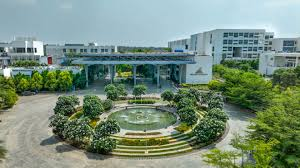From Gurukul to Green Campuses: Building Sustainable Student Communities for a Sustainable Planet

“Ever wondered whether the contours of sustainability are being drawn now, or whether they pre-existed?”. Evidence suggests that sustainable practices were present in the Indian subcontinent, in ancient Bharath, as early as the Vedic period (1500–1700 BCE). The Prithvi Shloka contains a verse that prays to Mother Earth: ‘Whatever I dig out from you, O Earth, may you regenerate quickly again; may we not damage your vital habitat and heart.’’ This verse is deeply reflective of the concern for the entire ecosystem and its sustenance. The great epics Ramayan and Mahabharatha written much later between (5th and the 7th century), also provide anecdotal evidence of value systems that closely align with today’s sustainable development goals (SDG’S).
Let us explore how Gurukul shaped Lord Rama's value system through some compelling examples. When Rama met Sabari, an elderly tribal woman, she offered him half eaten berries, which he readily accepted with love. This attitude reflects Rama’s deep emotional intelligence, and social empathy.
All of us know the love and affection Ram had for Guhan, the boatman who helped Ram cross the Sarayu on his way to the forest. Sending us a clear signal that the soul is more important than the title society gives. While many believe that Rama did injustice to Sita by expelling her from the kingdom based on an accusation by a washerman. Looking at this from a King's perspective, what Rama did can be interpreted as an act of a caretaker of people, upholding and balancing his duties of governance. Rama’s value systems developed over a period of his stay in the Gurukul, an abode for learning that offered a holistic perspective rather than a fragmented approach focusing on spiritual, intellectual and physical discipline.
We are well aware of the deep bond of friendship Krishna shared with the humble, poverty stricken Sudhama, his companion at Rishi Sandipanis Ashram, in Ujjain. — a story that reflects Krishna’s humility, compassion, and unwavering loyalty, showing that true friendship transcends wealth and social status.” Another powerful character in the Mahabharata, Shakuntala, who grew up in Rishi Kanva’s Ashram, formed deep bonds with the natural world around her. Such was her bond that she sought the permission of the trees, shrubs and animals and birds before leaving the hermitage. While Krishna’s behaviour sends a message of social equality, Shakuntala's behaviour embodies the principle of seeking consent and harmony from the natural world. The behaviour of Krishna and Shakuntala reflects the rich value systems they imbibed during their time in the Gurukul.
Reflecting on these stories, the key themes that the ancient Gurukul system imbibed in students were community and collaboration, leadership and ownership, practical experience, and holistic education that went beyond academics to include values, culture, and behavioural impact. Presidency University, nestled in lush green surroundings and home to a diverse community of cultures and viewpoints, is one such centre of learning where the age-old Gurukul parampara is being reimagined. With a motto aimed at empowering students and a culture rooted in the time-tested guru-shishya parampara.
Presidency University is on a mission to build a sustainable student community with the unwavering belief that this powerhouse will fuel the establishment of students of a sustainable planet.
Written by,
Dr. Sushma Muralie
Associate Professor- PSOM













 Rajanukunte, Yelahanka, Bengaluru, Karnataka, Pin: 560119, India
Rajanukunte, Yelahanka, Bengaluru, Karnataka, Pin: 560119, India
 +91 9022092222
+91 9022092222